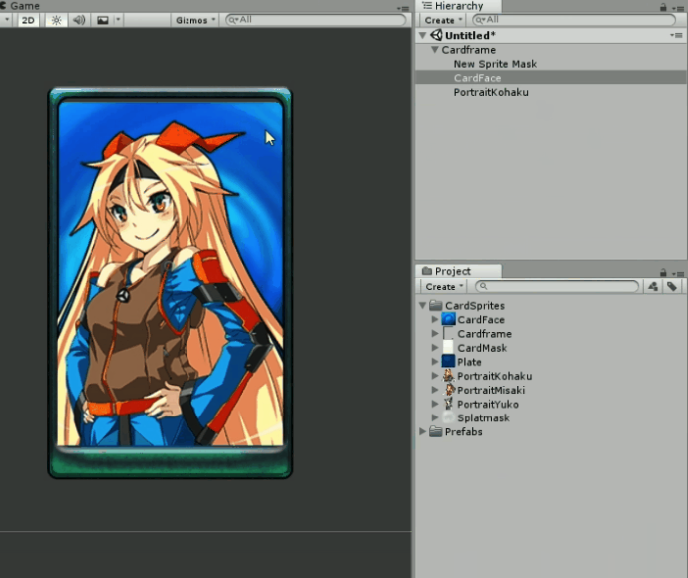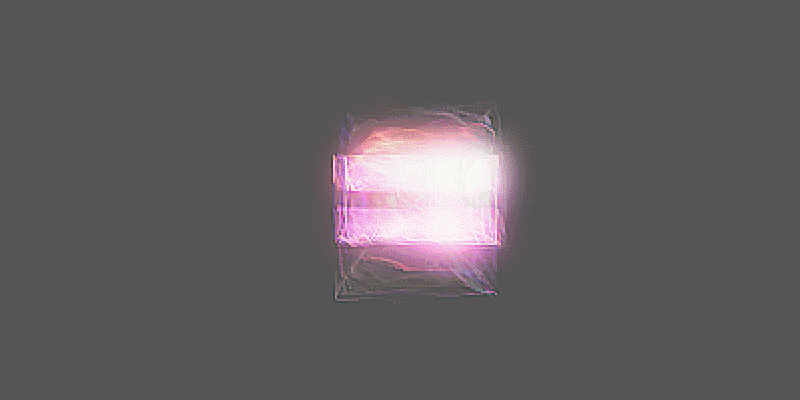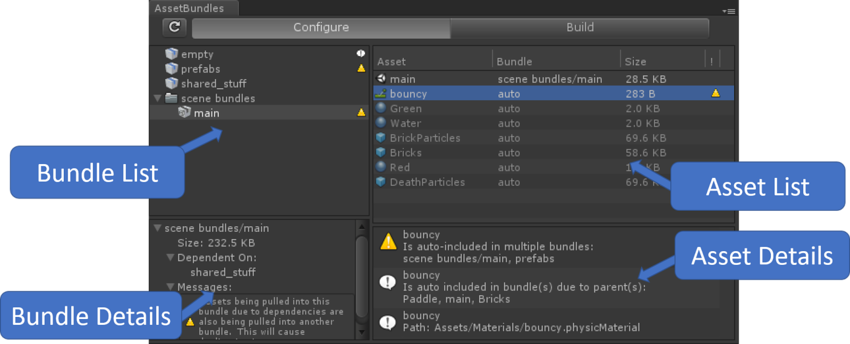Unity 2017: an overview of new features
Each major Unity update is a big event for the engine users. Until recently, Unity Technologies released their product under standard number versions, 1.0, 2.0, etc. In December 2016, the company announced that the current major version of Unity 5.6 will be the last in this line, after which Unity will switch to the new update format. The new version will be called Unity 2017, and the following versions will be numbered like this: 2017.1.0, 2017.2.0, etc.

On July 11, the company’s Introducing Unity 2017 article appeared on the company's official website, which included links to download the beta version of the product. In our review, of course, we will primarily rely on official sources, such as the article mentioned, but also add some of our personal observations.
What brightest innovations will be brought to us by new Unity? The developers themselves focus on three new features: Timeline (timeline), Cinemachine (a set of “smart” cameras) and Post-Processing Stack (a set of tools for post-processing). Let's look at them more closely.
')
Timeline - a very handy tool for creating animation, which has long been in many related products. With the help of Timeline, you can quickly create transformation animations, interface animations, etc. Everything is done using standard keyframes, between which Unity itself changes the state of your objects.
Timeline is a great alternative and addition to the standard animation clips. Especially convenient to create simple cut-scenes, intro and other events that make your game more interesting. In addition, in the Timeline, you can work with audio and attach audio clips to events.

Appearance Timeline
Cinemachine is a set of smart cameras with the help of which you can cut scenes using cameras, rollers on the engine, and also connect all this with the capabilities of the Timeline.
Together with Cinemachine in Unity, the concept of a virtual camera appears for the first time, with which you can skillfully control cameras on the stage and make excellent transitions between scenes. In addition, virtual cameras make it possible to follow the character without using scripts like SmoothFollow. Everything is available out of the box.
The best part is that Cinemachine allows you to do a lot of effects associated with cameras (shaking, rocking, etc.) without using third-party Tween plug-ins and without a single line of code.
Using the Timeline, you can carry out camera spans over the location, spectacular demonstrations of characters and other techniques that we used to see in modern games.

Example of following the player and switching the angle of the trigger (hit the puck)
The next whale is the Post-Processing Stack . Unity positions this tool as a source of powerful functionality for designers who want to improve the visual range of their game. Post-processing Stack is used to add post effects. In previous versions of Unity, this feature has already been implemented: post effects could be added to cameras as separate components, but the Post-Processing Stack is a single mechanism in which all effects, such as anti-aliasing, smearing, and glowing are collected and available to be invoked. and so on. The convenience of this tool is that you no longer need to refer to each of them separately. Instead, it presents a stack of effects that can be changed as you like.

Appearance of Post-Processing Stack and its result
2D games are not outdated: now they are actively experiencing their renaissance after the boom of indie hits. In Unity 4.3 2D sprites were added for the first time, as well as the physics engine Box2D; In addition, the opportunity to work with a 2D camera. In Unity 2017, the creators claimed even more chips for 2D developers.
First, in Unity 2017 improved support for atlases. There used to be a Sprite Packer, but it had some drawbacks and was very uncomfortable. It was replaced by Sprite Atlas.
In Unity 2017, atlases have become easier to use and understandable even for a novice developer. With the help of Sprite Atlas, you can finally create atlases with convenience (that is, simple drag & drop), as well as pull out and change sprites on an object right in runtime.

An example of the new Sprite Atlas
In addition, finally added masks for sprites! Previously, masks were only available for UI Canvas components, although it would be very useful for 2D graphics. And so they appeared. Very pleased that the developers are listening to the community.

Sprite mask example
Most recently, in version 2017.1, standard shapes for PolygonCollider2D were introduced to help you create fast, physical 2D prototypes. Plus, the developers improved the 2D particle system and introduced the Perlin noise system. There were noises before, but now it has become quite good.

Perling noise system example
Further more. In Unity 2017, the GameObjectRecorder component has appeared, with which you can create arrays of animations and record physical interactions, and then play them with far less resources (you can even go backwards!).

Example of physics recording
As you can see, Unity 2017 provides even more functionality for 2D development, so take your time to bury 2D, it will show everyone.
Dig a little deeper. These innovations, though not pleasing to the eye, but very useful.
First: finally connected C # 6 and .NET 4.6, albeit experimentally! Unity developers have long suffered from the fact that they had to work on the outdated version 3.5 (and this is 2007!). Now, with .NET 4.6, a lot of fixes, performance improvements and new features have arrived.

Do not forget to choose 4.6 in the settings (remember, this is still an unstable function!)
Second: added the Asset Bundle Browser, with which you can easily and conveniently create asset bundles to load your resources.

New browser for bundles
Next you need to mention a massive update of the render. Here and improved particle rendering, and deferred lighting for iOS with the participation of Metal / OpenGL ES 3, and another car of various modifications. In addition, an improved system for displaying shadows in real time and working with the light in general. Details are better to see in articles from Unity, here we will not dwell on this. But, in any case, it is very pleasant that the product is developing so actively.
What else? A lot of everything. Let's go over the general list.
As we can see, Unity is developing very fast and with each release it tries to cover more and more innovative functions. Their main trump cards - ease of development and multiplatform with each passing year are becoming more pronounced.
Anyway, we are very pleased with the progress and constantly monitor the patch-laptops, so we’ve got an overview of the new features of Unity 2017.
And while he is at work, you can read more detailed lists of changes and find details about what is most useful for you.
→ Introducing Unity 2017
→ Roadmap new features
→ Unity for artists and designers (new tools)
→ Video reviews of the new Timeline and Cinemachine tools from the Unity Europe 2017 conference

On July 11, the company’s Introducing Unity 2017 article appeared on the company's official website, which included links to download the beta version of the product. In our review, of course, we will primarily rely on official sources, such as the article mentioned, but also add some of our personal observations.
Three whales on which Unity 2017 stands
What brightest innovations will be brought to us by new Unity? The developers themselves focus on three new features: Timeline (timeline), Cinemachine (a set of “smart” cameras) and Post-Processing Stack (a set of tools for post-processing). Let's look at them more closely.
')
Timeline - a very handy tool for creating animation, which has long been in many related products. With the help of Timeline, you can quickly create transformation animations, interface animations, etc. Everything is done using standard keyframes, between which Unity itself changes the state of your objects.
Timeline is a great alternative and addition to the standard animation clips. Especially convenient to create simple cut-scenes, intro and other events that make your game more interesting. In addition, in the Timeline, you can work with audio and attach audio clips to events.

Appearance Timeline
Cinemachine is a set of smart cameras with the help of which you can cut scenes using cameras, rollers on the engine, and also connect all this with the capabilities of the Timeline.
Together with Cinemachine in Unity, the concept of a virtual camera appears for the first time, with which you can skillfully control cameras on the stage and make excellent transitions between scenes. In addition, virtual cameras make it possible to follow the character without using scripts like SmoothFollow. Everything is available out of the box.
The best part is that Cinemachine allows you to do a lot of effects associated with cameras (shaking, rocking, etc.) without using third-party Tween plug-ins and without a single line of code.
Using the Timeline, you can carry out camera spans over the location, spectacular demonstrations of characters and other techniques that we used to see in modern games.

Example of following the player and switching the angle of the trigger (hit the puck)
The next whale is the Post-Processing Stack . Unity positions this tool as a source of powerful functionality for designers who want to improve the visual range of their game. Post-processing Stack is used to add post effects. In previous versions of Unity, this feature has already been implemented: post effects could be added to cameras as separate components, but the Post-Processing Stack is a single mechanism in which all effects, such as anti-aliasing, smearing, and glowing are collected and available to be invoked. and so on. The convenience of this tool is that you no longer need to refer to each of them separately. Instead, it presents a stack of effects that can be changed as you like.

Appearance of Post-Processing Stack and its result
More for 2D
2D games are not outdated: now they are actively experiencing their renaissance after the boom of indie hits. In Unity 4.3 2D sprites were added for the first time, as well as the physics engine Box2D; In addition, the opportunity to work with a 2D camera. In Unity 2017, the creators claimed even more chips for 2D developers.
First, in Unity 2017 improved support for atlases. There used to be a Sprite Packer, but it had some drawbacks and was very uncomfortable. It was replaced by Sprite Atlas.
In Unity 2017, atlases have become easier to use and understandable even for a novice developer. With the help of Sprite Atlas, you can finally create atlases with convenience (that is, simple drag & drop), as well as pull out and change sprites on an object right in runtime.

An example of the new Sprite Atlas
In addition, finally added masks for sprites! Previously, masks were only available for UI Canvas components, although it would be very useful for 2D graphics. And so they appeared. Very pleased that the developers are listening to the community.

Sprite mask example
Most recently, in version 2017.1, standard shapes for PolygonCollider2D were introduced to help you create fast, physical 2D prototypes. Plus, the developers improved the 2D particle system and introduced the Perlin noise system. There were noises before, but now it has become quite good.

Perling noise system example
Further more. In Unity 2017, the GameObjectRecorder component has appeared, with which you can create arrays of animations and record physical interactions, and then play them with far less resources (you can even go backwards!).

Example of physics recording
As you can see, Unity 2017 provides even more functionality for 2D development, so take your time to bury 2D, it will show everyone.
System buns
Dig a little deeper. These innovations, though not pleasing to the eye, but very useful.
First: finally connected C # 6 and .NET 4.6, albeit experimentally! Unity developers have long suffered from the fact that they had to work on the outdated version 3.5 (and this is 2007!). Now, with .NET 4.6, a lot of fixes, performance improvements and new features have arrived.

Do not forget to choose 4.6 in the settings (remember, this is still an unstable function!)
Second: added the Asset Bundle Browser, with which you can easily and conveniently create asset bundles to load your resources.

New browser for bundles
Next you need to mention a massive update of the render. Here and improved particle rendering, and deferred lighting for iOS with the participation of Metal / OpenGL ES 3, and another car of various modifications. In addition, an improved system for displaying shadows in real time and working with the light in general. Details are better to see in articles from Unity, here we will not dwell on this. But, in any case, it is very pleasant that the product is developing so actively.
And that is not all
What else? A lot of everything. Let's go over the general list.
- Adding an Analytics Event Tracker mechanism, with which you can quickly and without using code add events to be tracked using Unity Analytics.
- The advent of Unity Teams, which consists of the Unity Collaborate (out of beta) and Cloud Build. Now you can jointly edit scenes, scripts and prefabs in the public domain. In addition, the Unity Editor has been updated for more convenient work with shared resources.
- Adding Ambisonic audio technology to create a 360 ° sound environment. It will be possible to use sound sources not only to the right and left of the player, but also higher or lower. This system can also be used in 360 ° video.
- Adding a UI profiler, which allows you to assess how much your game loads the interface
- Improved support for Visual Studio, including Visual Studio for Mac OS
- Very vigorous development of VR and AR directions, about which you need to write a separate post
- Add Universal Windows Platform instead of Windows Store. Universal Windows Platform includes builds for Xbox One, Windows 10, Windows Phone 10 and HoloLens
Conclusion and useful materials
As we can see, Unity is developing very fast and with each release it tries to cover more and more innovative functions. Their main trump cards - ease of development and multiplatform with each passing year are becoming more pronounced.
Anyway, we are very pleased with the progress and constantly monitor the patch-laptops, so we’ve got an overview of the new features of Unity 2017.
And while he is at work, you can read more detailed lists of changes and find details about what is most useful for you.
→ Introducing Unity 2017
→ Roadmap new features
→ Unity for artists and designers (new tools)
→ Video reviews of the new Timeline and Cinemachine tools from the Unity Europe 2017 conference
Source: https://habr.com/ru/post/336714/
All Articles